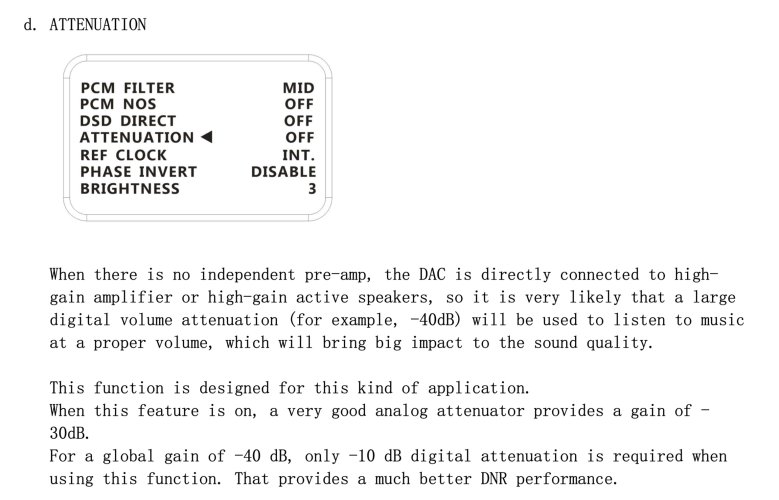I will offer my experiences here as an alternative and highlight these are just my opinions. I am in no way challenging anyone else's experiences etc, we all hear differently, listen with different gear and probably value some aspects more than others. Whatever you are happy with, enjoy it and ignore me.
I love reading about how other people experience the same equipment I own and if I can find a way to improve things from reading their impressions, then I am delighted. I don't think anything is snake oil and I never believe in anything that is being overhyped. I like to listen with my ears and then decide. Like everyone, sometimes I hear gains where no one else does and that's cool if people don't see it that way. I also sometimes think people are mad for what they feel are pluses they hear, but I will always be respectful of our differences.
I have tried the R26 with all of the sources I have or had while I have owned it. I think I would probably be described as "obsessive" by my audio friends when it comes to trying every possible combination available with any piece of gear I own. I am sure some of you can connect with that. If there is 1% extra available, I will chase it. Not blindly, but because I like doing it. It is a journey with your equipment and I find the best equipment has these hidden percentages. The best equipment is often over-engineered so you can tap into that. Crap gear is always crap gear no matter what the chasing.
My usual set-up is a Macbook Air connected to the R26 via an AudioQuest Cinamon USB cable. I have tried all the Audioquest USB cables but that is a discussion for another thread. I have found the Mac USB post to be as close to silent as I can find, even if charging.
I have tried I2S with some other DACs I've owned and found it to be vastly superior to USB, without the use of an external clock or DDC. I was expecting R26 to be the same.
This has not been the case with my R26 though. My experience with R26 is that USB is the best input, to my ears and equipment. When I listened to the R26 connected via (another) AudioQuest mini HDMI to Full HDMI cable with the Cayin N8ii as the host, I found it sounded inferior to the USB connection. I have used the Cayin N8ii with other DACs in this config and found it excellent so I would generally not doubt it set up like this. I have extensively A/B tested the N8ii's USB C output vs the I2S output too, to the best I can so I feel like I have good experience here.
Figuring it may just be a mismatch of items in the chain, I connected my Mac to the R26 via a number of DDCs, with and without inbuilt clocks, and my experience has been that at best, this config only brings the I2S connection up to the same standard as the USB cable (I have a sympathetic audio dealer who let me try a number of DDCs including the Singer Su-6, Musician Pisces, Topping U90 and the SMSL PO100Pro plus some others he recommended but their names escape me now).
After watching a well-known YouTube reviewer claim that he found the optical input to be the best, I went down the rabbit hole of connecting optical cables to all the sources I have, including some DDCs, and I found it to be marginally worse than USB but I really can't be sure because of the time it takes to swap from one source to the other and relying on audio memory. I tried everything from cheap optical cables I bought in a supermarket to "audiophile" cables which claimed to be better somehow.
Just to note, I don't buy into this BS but I am stupid enough to buy them to try out.
I don't know if better or different gear would return different results but I can just tell you that I am very happy with a USB C to USB B cable from AudioQuest connected directly to my Mac.
I also have a collection of USB C cables that all claim to be better in some way than others. As I said above, I am stupid enough to buy them, if only to test out their claims. While some are clearly better than others (not 400 euros better btw!), it will probably come as no shock to everyone (or maybe it will), that the most important thing is the quality of the USB port on your source. You can add whatever cables, DDCs, clocks or silencers you like but if the USB port is poor quality, nothing will improve it.
Some thoughts on the USB ports (if it is of any help to anyone):
- I have yet to find a standard Windows PC or laptop that has a USB port that is free from some sort of noise. You might think you have one but I would wager you just haven't heard a silent port yet.
- I have yet to find an audio card that can work with Linux and output high res files without some sort of degradation. I love Linux but it is really crap for Audio (if someone knows a distribution/ hardware combo that isn't crap, please let me know).
- Only USB C port iPads are worth considering as a source but they all somehow sound bright, especially the Pro models
- Lots of higher-end Android phones with UAPP sound very high quality. It is only when directly compared to a better source that they fall down. Don't compare and you will be happy!
- Macs offer the best USB ports IMO. They just work and are quiet. I am sure I will get hate for that, but for me, that is what I have found. I am not an Apple lover, I just buy gear that will produce the best results for my ears. If Windows works for you - brilliant. I am not running anything down and nor do I want to get into a debate. It is just my thoughts. Feel free to disagree and I will listen.
I haven't bought into changing fuses. Yet. I don't see why it is considered snake oil though. Every other part of the circuit that carries current we are happy to believe changes the sound. Just read my impressions above! If a fuse can change the sound positively, I am all for it. I just wish some of the manufacturers would put them up for independent scrutiny without the need to buy first. I would be happy to compare with other parts in the power train to see if they compare favourably. I am not sure I am happy to pay 200 euros for a fuse though without someone else testing it first, independently.
I am much more biased to believe something will sound better if I have spent my own money on it. I think these products need to be provided free to people with a track record of being impartial in their reviews etc.
While I am not immune to the effect that comes with spending your own money on something, I can accept if I have wasted my money. I am also happy to have tried something new and ruled it out though so I never feel completely conned if something doesn't work out. I don't think this is common in the hobby though. People seem willing to die on the cross for something they have purchased themselves and believe improves things. That doesn't lead to very impartial views of something like fuses. It needs to be tested back to back with the same source. One with the upgraded fuse, one without and using something like an Oriolus Audio selector so changes from one source to the other are instant and not relying on audio memory, which is grossly inaccurate, and most times biased. I also believe this has to be done on a source-by-source basis. If a fuse is good with one piece of equipment, it doesn't mean it will be good with all.
Personally, I think if you add an external piece of equipment to the chain and that improves things, you shouldn't commend the new piece of equipment, you should ask yourself why you bought something that needed more money being spent to sound good/ better. When you spent the money, was it actually better or did you just tell yourself that? Without testing as I described above with the audio selector, you are probably fooling yourself. You may think this is a crazy statement but I would suggest you put it to the test if you do. Differences we tell ourselves are there, often are not when you can a/b with as few variables as possible. I've had my bubble burst more than once in blind tests.
Buy at the price point you can afford and enjoy it. Even if a fuse improves things, you will just get used to it quickly and the improved sound becomes your new norm. You will get bored of it and not long after you will be looking at external clocks etc. It never ends. When you get to the end of that road it will be the R27 or whatever is next.
To wrap up and stop rambling, the Gustard R26 is one of the best DACs I have heard at any price point. It is really good. A solid recommendation from me with or without any mods and a comparative bargain. Just my honest thoughts above which I hope help someone. Cheers!





















